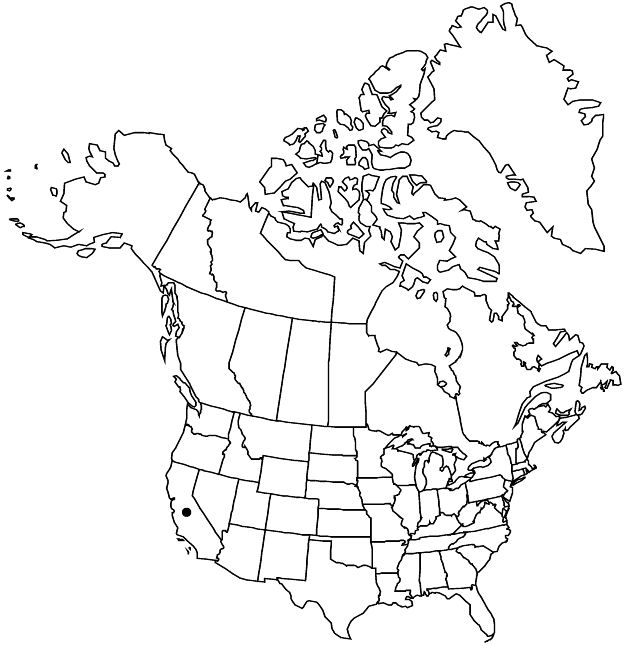Euphorbia vallis-mortae
Madroño 2: 19. 1931.
Herbs, perennial, with thickened, woody taproot. Stems prostrate to ascending, often mat-forming, 10–45 cm, pilose to villous. Leaves opposite; stipules distinct or connate, subulate to filiform, 0.4–1.1 mm, densely tomentose; petiole 0.4–1 mm, pilose to villous; blade suborbiculate to oblong-ovate, 3–8 × 2–6 mm, base slightly asymmetric, rounded, margins entire, apex rounded to obtuse, surfaces pilose to villous; 3-veined at base, midvein conspicuous, venation often obscured by pubescence. Cyathia solitary at distal nodes; peduncle 0.5–1.8 mm. Involucre obconic-campanulate, 1.2–2.3 × 1–1.8 mm, densely pilose to villous; glands 4, yellow to red, subcircular to oblong, 0.2–0.5 × 0.4–0.9 mm; appendages white, flabellate to oblong, 0.1–0.7 × 0.5–1.9 mm, distal margin entire or crenulate, adaxial surface ciliate-puberulent. Staminate flowers 15–22 (–50). Pistillate flowers: ovary densely pilose; styles 0.4–0.8 mm, 2-fid 1/2 length. Capsules ovoid, 1.5–2.2 × 1.8–2.2 mm, tomentose; columella 1.2–1.6 mm. Seeds white, gray, or light-brown, ovoid, sharply 4-angled in cross-section, abaxial faces slightly convex, adaxial faces concave, 1.2–1.7 × 0.6–0.9 mm, smooth.
Phenology: Flowering and fruiting late spring–fall.
Habitat: Roadsides, desert scrub, streamsides, sandy washes.
Elevation: 700–2000 m.
Discussion
The specific epithet of Euphorbia vallis-mortae is a misnomer because the species does not occur in Death Valley; instead, it is found at the transition of the northern edge of the Mojave Desert and the foothills of the southern Sierra Nevada in Inyo, Kern, and San Bernardino counties.
Selected References
None.
Lower Taxa
"connate" is not a number. "distinct" is not a number."/2" is not declared as a valid unit of measurement for this property.
